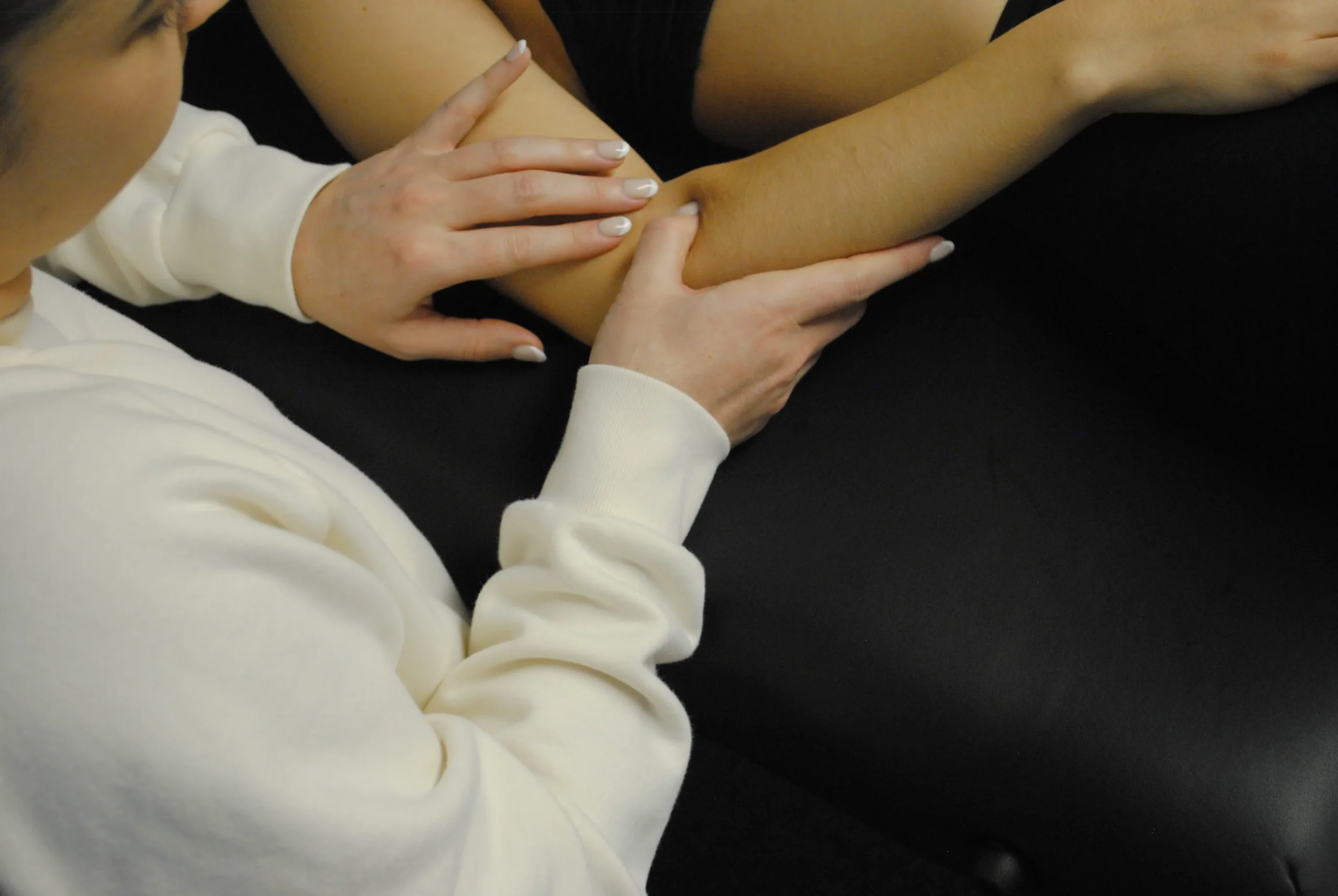Tennis Elbow, also referred to as lateral epicondylitis, refers to pain at the lateral (outside) portion of the elbow. Symptoms may include:
- Tenderness at the lateral (outside) portion of the elbow
- Tenderness along the top of the forearm
- Pain or weakness with gripping or carrying objects
- Pain or weakness with moving the wrist up and down
- Pain with twisting the forearm
What causes Tennis Elbow?
Tennis Elbow is usually a result of irritation to the tendons that connect the forearm extensor muscles to the bony point on the outside of the elbow. These specific muscles are responsible primarily for gripping, extending your wrist, and rotating your forearm. Repetitive activities involving these motions (all present in tennis) are often the cause for tennis elbow.
Can I get Tennis Elbow if I don’t play tennis?
Absolutely. Tennis Elbow is only referred to as such because it is so common in tennis players, due to the combined motions of grip, wrist extension, and forearm rotation when swinging a tennis racket.
Any combination of these movements done repetitively, without adequate rest, or without adequate training can sometimes lead to tennis elbow. Other scenarios where this might occur include gardening, some construction or carpentry related tasks, or even carrying very heavy grocery bags on a bent elbow.
Do I need an X-ray or MRI?
For most people with signs and symptoms of tennis elbow, an immediate X-ray or MRI is typically not necessary. Unless your physical therapist or physician recommends otherwise, it is usually best to start with a physical therapy exam. Your PT will assess your symptoms, movement capabilities, strength, and overall function. Based on this examination, you will discuss whether further investigation or imaging may be necessary, or if you are ready to begin physical therapy treatment.
How do I resolve my elbow pain?
It’s essential to meet with your physical therapist to personalize your treatment plan to your specific situation – everyone’s body is different! Some typical treatments that you may see in physical therapy for tennis elbow include:
- Manual therapy: Your physical therapist may perform certain manual techniques to address the painful elbow muscles by releasing tension, improving mobility, and decreasing pain.
- Mobility Work: You will work on flexibility of the upper extremity (wrist, elbow, shoulder) as well as the spine and trunk, depending on which types of movements you are performing frequently and where your specific restrictions are.
- Strength Work: You will work on strength of the upper extremity, core / trunk / back, and any other involved muscles in your specific movement patterns.
- Pain Management Strategies: Your physical therapist will advise you on how to modify certain movements in the short-term to limit further injury, as well as how to receive any short-term pain relief through exercise, heat, cold, self-massage, or other techniques.
If you are experiencing elbow pain, be sure to reach out to us ASAP! It is always best to take a proactive approach when it comes to your health.
Sources:


